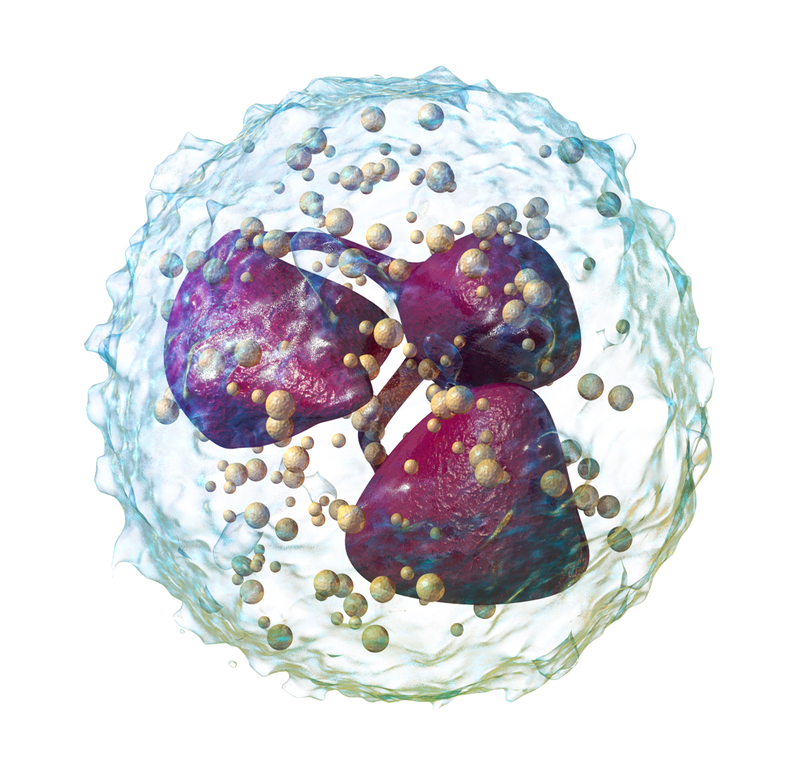November 14, 2024
Author(s): Mary Caffrey
Two studies published this month are pointing to the value of the neutrophil-to-lymphocyte ratio (NLR) in forecasting either thrombosis or mortality risk in different myeloproliferative neoplasms (MPNs).1,2
Neutrophil | Image: Blausen Medical 2014

This inflammatory biomarker has emerged as an indicator due to the behavior of neutrophils in MPNs; they are known to produce cytokines when activated and to interact with tissue macrophages and dendritic cells, according to authors of a November 6, 2024, study in Blood Cancer Journal that explored NLR as a prognostic indicator of mortality in polycythemia vera (PV).1
These authors, from several institutions in Italy, analyzed the NLR in 1508 patients with PV and concluded that those with an NLR of at least 5 “were generally older, had a longer disease history, and had higher cardiovascular risk factors, more arterial thrombosis, and more aggressive blood counts, indicating a more proliferative disease.”
This was a prospective study based on patients enrolled in the European Collaboration on Low-Dose Aspirin in Polycythemia Vera (ECLAP) trial, a randomized study to assess the risk/benefit ratio of low-dose aspirin in PV.3
The authors of the new study analyzed data from the 151 deaths (10%) that occurred among the study population, and found an inverse relationship between lymphocyte counts and mortality risk, while also finding that higher lymphocyte counts were associated with a lower risk of death. Their data indicated that a higher NLR correlated with an increased risk of death.1
Thus, these authors concluded that NLR was an accurate predictor of mortality, and those patients with a ratio of at least 5 had worse overall survival with twice the mortality rate of those with a ratio less than 5.1
Previous venous thrombosis was also a strong predictor of death, they wrote.
Findings in Cancer. These findings were consistent with results published November 12, 2024, in Cancer, the official journal of the American Cancer Society, which found a relationship between NLR value at diagnosis and a risk of thrombotic events later on.2 Although this second study was a retrospective study involving fewer patients (473) with essential thrombocythemia (ET), the results also found a predictive value for NLR.
Authors in Cancer, from the University of Milan, reported a total of 78 thrombotic events among the 473 patients, for an incidence rate of 1.8 events per 100 patients/year. This analysis found that an NLR value of at least 4 at diagnosis was associated with a higher cumulative thrombotic risk (HR, 2.05; 95% CI, 1.29-2.28; P = .0001), as well as having diabetes and hypertension.2
